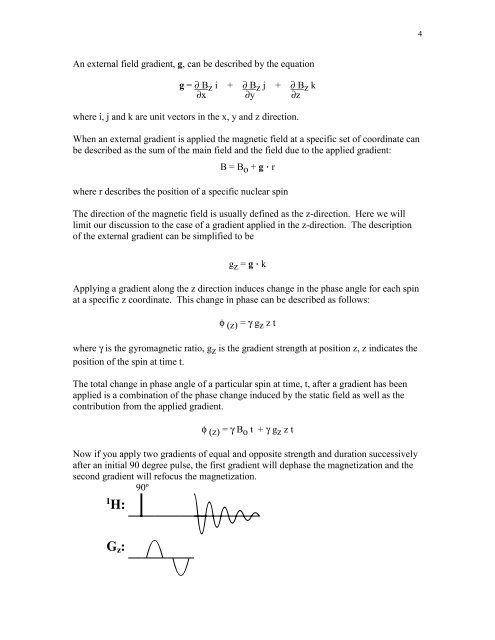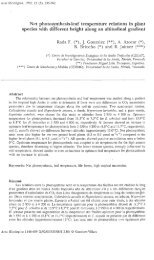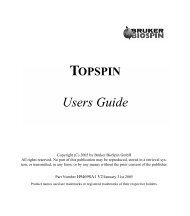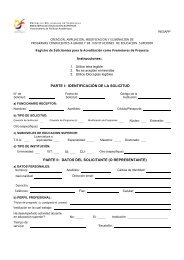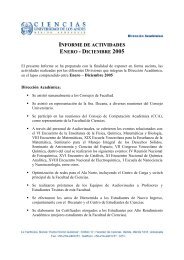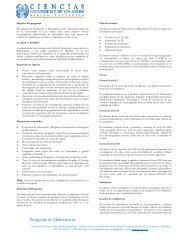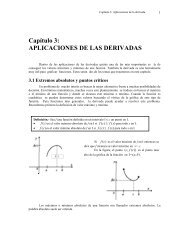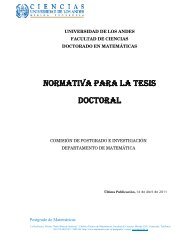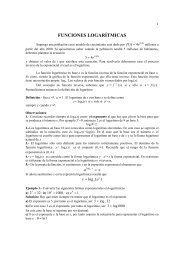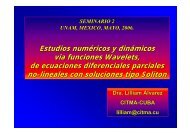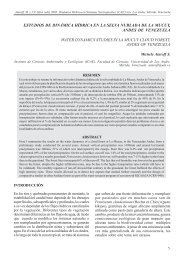Diffusion Manual Outline
Diffusion Manual Outline
Diffusion Manual Outline
Create successful ePaper yourself
Turn your PDF publications into a flip-book with our unique Google optimized e-Paper software.
4<br />
An external field gradient, g, can be described by the equation<br />
g = ∂ B z i + ∂ B z j + ∂ B z k<br />
∂x ∂y ∂z<br />
where i, j and k are unit vectors in the x, y and z direction.<br />
When an external gradient is applied the magnetic field at a specific set of coordinate can<br />
be described as the sum of the main field and the field due to the applied gradient:<br />
B = B o + g . r<br />
where r describes the position of a specific nuclear spin<br />
The direction of the magnetic field is usually defined as the z-direction. Here we will<br />
limit our discussion to the case of a gradient applied in the z-direction. The description<br />
of the external gradient can be simplified to be<br />
g z = g . k<br />
Applying a gradient along the z direction induces change in the phase angle for each spin<br />
at a specific z coordinate. This change in phase can be described as follows:<br />
φ (z) = γ g z z t<br />
where γ is the gyromagnetic ratio, g z is the gradient strength at position z, z indicates the<br />
position of the spin at time t.<br />
The total change in phase angle of a particular spin at time, t, after a gradient has been<br />
applied is a combination of the phase change induced by the static field as well as the<br />
contribution from the applied gradient.<br />
φ (z) = γ B o t + γ g z z t<br />
Now if you apply two gradients of equal and opposite strength and duration successively<br />
after an initial 90 degree pulse, the first gradient will dephase the magnetization and the<br />
second gradient will refocus the magnetization.<br />
90º<br />
¾!UVVM<br />
ÅV²³


